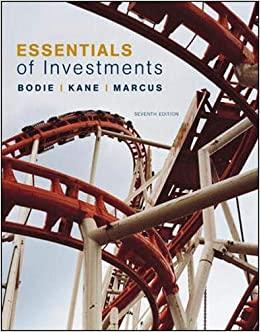Answered step by step
Verified Expert Solution
Question
1 Approved Answer
Consider the following portfolio selection problem: a consumer has an initial wealth of w which has to be allocated between a risky and a riskless
Consider the following portfolio selection problem: a consumer has an
initial wealth of which has to be allocated between a risky and a riskless
asset. For each dollar invested in the risky asset, the consumer gets a
return with probability and with probability It
is assumed that the asset has an expected return greater than that is
The riskless asset yields a dollar for each dollar
invested. Let and be the part of wealth allocated to the risky and
riskless asset respectively. We refer to as the consumer's portfolio.
The consumer has a Bernoulli utility function over wealth given by
which is strictly increasing and strictly concave; further, the consumer is
assumed to be an expected utility maximizer.
a Set up the consumer's expected utility maximization problem as an
unconstrained problem with choice variable and write the Kuhn
Tucker condtions. Show that the optimal holdings of the risky
asset, is strictly positive. That is even though the consumer is risk
averse, the consumer would still invest some amount in the risky asset
if the risk is actuarially fair in the sense that
This exercise offers an explanation of why risk averse consumers are
empirically observed to invest in the stock market.

Step by Step Solution
There are 3 Steps involved in it
Step: 1

Get Instant Access to Expert-Tailored Solutions
See step-by-step solutions with expert insights and AI powered tools for academic success
Step: 2

Step: 3

Ace Your Homework with AI
Get the answers you need in no time with our AI-driven, step-by-step assistance
Get Started


